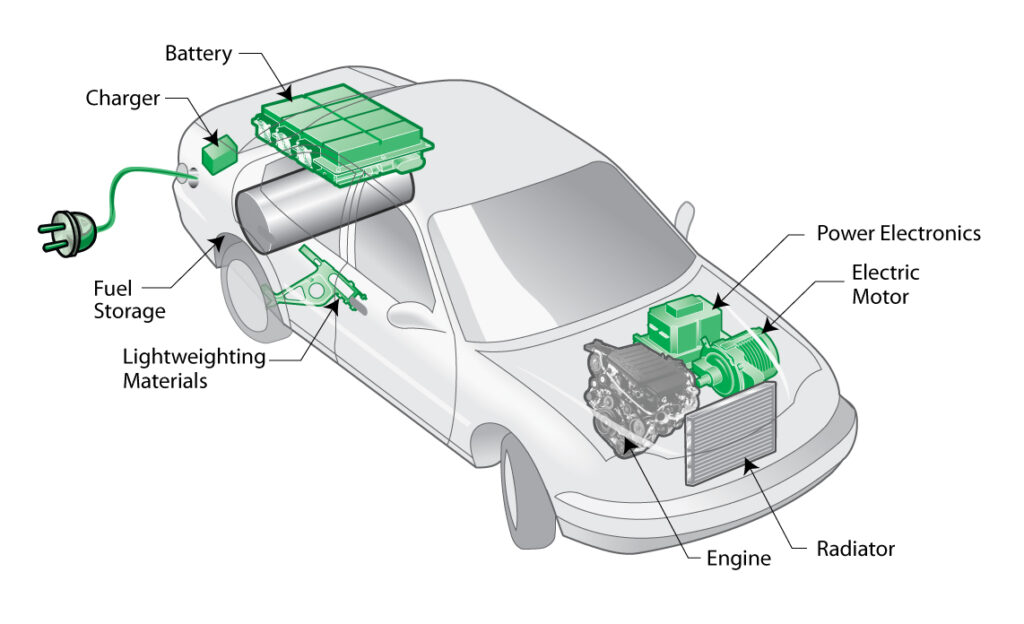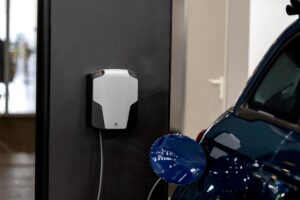Electric Vehicles (EVs), once considered a distant dream, are now driving the future, heralding a revolution in transportation.
But along with this shift comes a new set of considerations: how does one navigate the complex landscape of Fringe Benefits Tax (FBT) for EVs?
Ahead, we will delve into the nuances of these FBT electric vehicles, their implications on your EV ownership, and how you can benefit from understanding the intricacies. Let’s get started!
What is Fringe Benefits Tax (FBT)?

Fringe Benefits Tax (FBT) is a tax that employers pay on certain benefits they provide their employees with, including the employee’s family members or other relations. The benefit may be in addition to, or part of, their wages package or salary.
Examples of these benefits can range from the use of a company car to health insurance to tickets to concerts or sporting events. The tax is calculated based on the value of the various fringe benefits provided.
FBT Exemption for Electric Vehicles – Key Features

The Fringe Benefits Tax exemption for EVs has several key features:
- The vehicle must be a zero or low-emissions vehicle, including a battery EV (Audi e-tron GT), hydrogen fuel cell EV (Toyota Mirai), and plug-in hybrid EV (Mitsubishi Outlander PHEV).
- The exemption is applicable to vehicles that are first “held and used” after 1 July 2022, including secondhand EVs.
- Plug-in hybrid electric vehicles (PHEVs) are eligible for the exemption until 1 April 2025, subject to specific conditions.
- The exemption makes EVs and PHEVs priced under approximately $89,000, or below the Luxury Car Tax threshold.
- The exemption applies to electric cars provided to employees for their private use.
Please note that these features might differ based on jurisdiction and may be subject to changes in tax legislation.
How Does the FBT Electric Vehicles Exemption Work?

In essence, under this policy, employers are not obliged to pay FBT on selected electric vehicles provided to their employees as part of a novated lease.
Ordinarily, any car provided by an employer to an employee would attract FBT. However, the EV FBT exemption eliminates this requirement for eligible EVs, making them a more appealing choice for both employers and employees.
The FBT exemption also extends to any associated benefits of running the eligible car during the period the car fringe benefit was provided. Despite the FBT exemption on EVs being applicable to employers, the value of the fringe benefit is still factored in when determining the reportable fringe benefits amount for the employee.
The FBT Exemption is not Available to Everyone

The FBT exemption for EVs is not universally applicable. It’s mainly available to employers who provide certain EVs as a part of a novated lease to their employees.
Self-employed individuals, contractors, or those who have purchased an EV outside of a novated lease agreement are typically not eligible for this exemption.
Not All Cars are Eligible for the FBT Exemption

The FBT exemption is not applicable to all EVs. It’s specifically designed for certain EVs and plug-in hybrid electric vehicles (PHEVs) that meet specific environmental performance standards.
Notably, from 1 April 2025, a plug-in hybrid electric vehicle will no longer be considered a zero or low-emissions vehicle under FBT electric vehicles law.
Moreover, the exemption only applies to EVs and PHEVs priced under approximately $85,000. This means that luxury electric cars may not qualify for the FBT electric vehicles exemption.
Frequently Asked Questions
When does the FBT exemption apply?
The FBT exemption for eligible EVs applies from the first FBT year (starting on 1 April) after the vehicle is purchased. For example, if an eligible vehicle was purchased on 15 March 2023, the FBT exemption would apply from 1 April 2023.
What is a zero or low-emissions vehicle?
A zero-emissions vehicle (ZEV) emits no exhaust gas, typically electric vehicles. Low-emission vehicles emit relatively low levels of certain emissions, often due to efficient engines or hybrid technology.
How do the tax rules apply to a home charging unit?
The Australian Tax Office doesn’t exempt charging stations from FBT electric vehicles. If an employee uses a purchased home charging unit for business purposes, they may claim depreciation deductions. But if the vehicle is for private use, the unit cost is non-deductible.
Conclusion
In conclusion, the FBT electric vehicles present a unique opportunity for both employers and employees. As we’ve explored, adopting electric vehicles can offer substantial tax benefits while promoting sustainable practices.
After all, when it comes to FBT electric vehicles, the benefits extend far beyond just tax savings or lower car expenses—they contribute to a healthier, more sustainable world.
If you’re interested in being an EV driver, consider opting for a secondhand electric car. Check out Kilowatt Cars now to find the best second hand electric vehicles for sale in Victoria and second-hand electric vehicles for sale in Melbourne.





